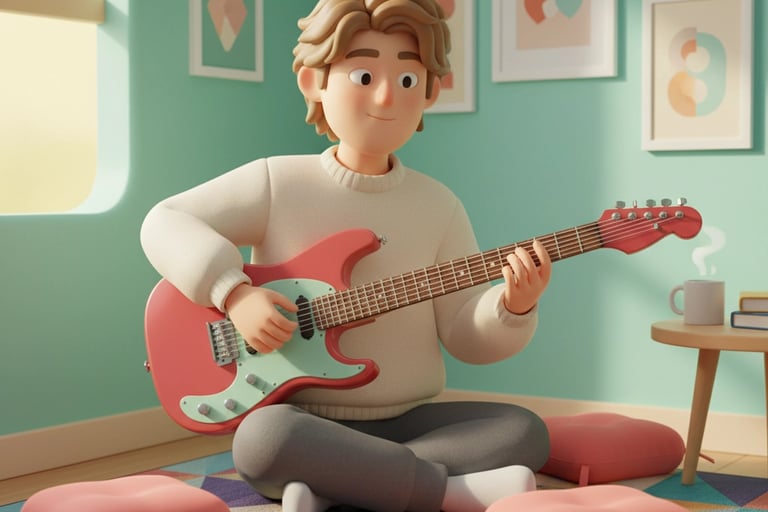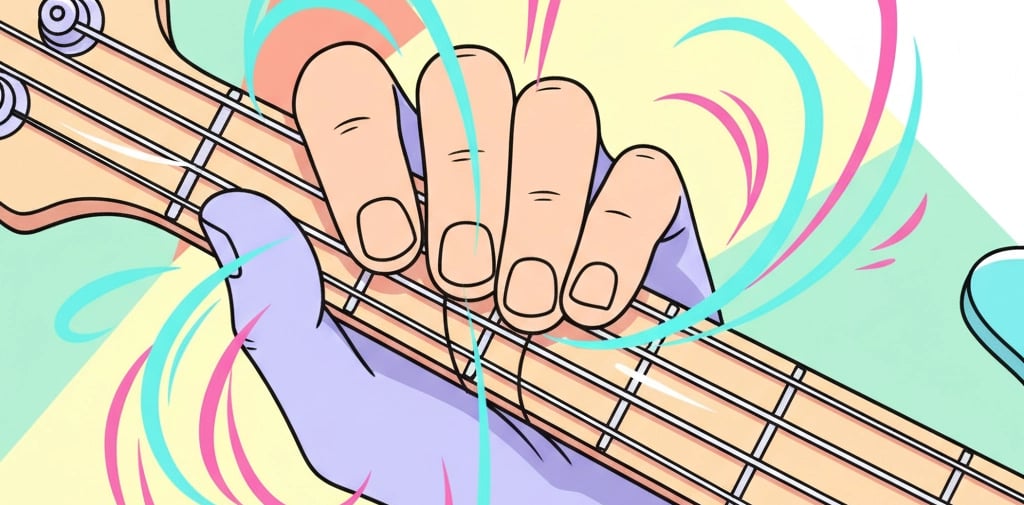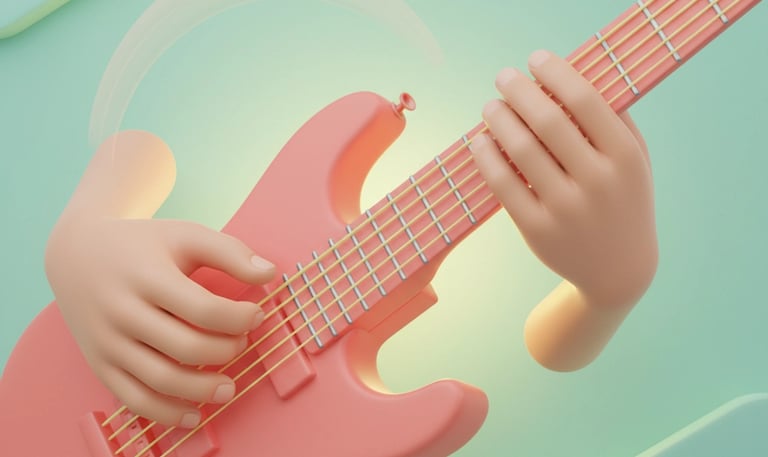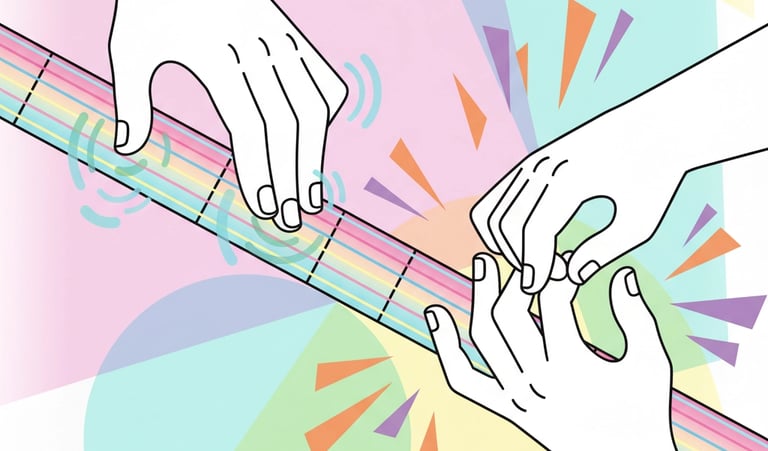Miyavi Guitar Techniques: 7 Mistakes You're Making
(And How Japanese Rock Masters Do It)
Axsinister
11/5/20255 min read


Hey there, fellow southpaws! Ready to dive into the mind-blowing world of Miyavi's guitar mastery? If you've been scratching your head wondering why your attempts at that signature slap technique sound more like a dying cat than the "Samurai Guitarist" himself, you're not alone!
Miyavi didn't just revolutionize Japanese rock, he completely rewrote the playbook for what a left-handed guitarist could achieve. This dude was playing 4D chess while everyone else was stuck on checkers, and today we're breaking down the seven most common mistakes that keep us lefties from unlocking his legendary techniques!
Mistake #1: Not "Closing the Distance" With Your Guitar
Let's kick this off with Miyavi's golden rule that'll change everything: closing the distance between you and your instrument. Sounds philosophical, right? Well, it is: and it's also the most practical advice you'll ever get!
Most of us lefties treat our guitars like distant relatives we see at holidays. We pick them up, noodle around for twenty minutes, then put them back in the corner. But Miyavi's approach is totally different: he talks about making your guitar an extension of yourself, not just something you occasionally interact with.


Mistake #2: Hitting Instead of Pulling
(The Slap Technique Game-Changer!)
Here's where things get spicy! Everyone sees Miyavi's explosive slap technique and thinks it's all about that dramatic hitting motion. WRONG! The secret sauce isn't in the slap: it's in the pull that follows!
Miyavi himself dropped this knowledge bomb: pulling is significantly more important than hitting in the slap technique. Mind. Blown. Right? The sound doesn't come from smacking the strings like you're high-fiving your guitar. It comes from that immediate pulling motion that lets the strings vibrate and sing!
For us lefties, this is actually a blessing in disguise. While right-handed players are trying to unlearn their instinctive hitting patterns, we get to build this technique from the ground up with proper form. Think of it like this: you're not punching the strings, you're having a conversation with them. Slap, pull, let them breathe, repeat!
This isn't just about practice time (though that's crucial). It's about developing an intimate relationship with your instrument where every technique becomes as natural as breathing. For left-handed players, this is especially important because we're already fighting against a right-handed guitar world. When you truly "close the distance," you stop thinking about reversed chord charts and start feeling the music flow through your fingers!
Mistake #3: Ignoring Your Left Hand's Coordination Powers
Plot twist alert! While everyone's obsessing over that flashy right-hand slapping action, the real magic happens with your left hand. Miyavi emphasizes that left-hand coordination and muting is absolutely crucial for clean, professional-sounding slap technique.
This is where us southpaws need to flip the script entirely. Your fretting hand (which is your right hand, remember!) needs to become a ninja master of string muting. When you slap a string, you've got to simultaneously mute the adjacent strings to prevent that muddy, chaotic sound that screams "amateur hour."


Mistake #4: Clinging to Your Pick Like a Security Blanket
Time for some tough love, folks! That little piece of plastic you've been clutching might be holding you back from Miyavi greatness. The man himself combines slapping and finger picking without using a pick, and there's genius behind this madness.
Going pickless opens up a whole universe of tonal possibilities that picks simply can't deliver. You get the warmth of flesh on strings, the ability to instantly switch between percussive slaps and melodic fingerpicking, and: here's the kicker: better control over dynamics and expression.
For left-handed players, ditching the pick can actually level the playing field. You're not fighting against pick angles designed for righties or dealing with awkward grip adjustments. Your fingers become your picks, and they're perfectly designed for your unique playing style!
It's like conducting an orchestra while juggling: your right hand is managing chord positions and muting unwanted noise while your left hand creates those percussive slaps. The coordination takes time to develop, but once you nail it? You'll sound like you've been channeling the spirit of Japanese rock gods!
Mistake #5: Copying Instead of Creating Your Musical Identity
Here's where Miyavi gets deeply philosophical, and it's absolutely beautiful! He doesn't rely on scales or rigid theoretical frameworks. Instead, he waits for phrases to come naturally and accepts them as they arrive. This guy isn't following someone else's roadmap: he's creating his own musical GPS!
The mistake most of us make? We try to copy his techniques note-for-note instead of understanding the spirit behind them. Miyavi describes his approach as "playing my scale" rather than following predetermined patterns. It's like he's speaking his own musical language, and that's what makes him legendary!


Mistake #6: Missing the Shamisen Connection
Ready for a history lesson that'll blow your mind? Miyavi incorporates the essence of the shamisen, a traditional Japanese instrument, into his guitar playing. This isn't just cultural appreciation: it's musical genius that gives his sound that otherworldly quality!
The shamisen's influence shows up in his percussive approach, his melodic phrasing, and even his physical technique. It's like he's bridging centuries of musical tradition with modern rock innovation. And guess what? This approach works incredibly well for left-handed players because shamisen techniques don't have the same right-hand bias that Western guitar methods often carry.
Think of it as musical time travel! You're connecting with ancient Japanese musical wisdom while pushing modern guitar techniques into uncharted territory. It's the perfect fusion of old-school soul with new-school innovation!


As left-handed players, we have a unique opportunity here. We're already forced to see the guitar world from a different perspective, so why not use that to our advantage? Let your southpaw viewpoint inform your musical voice. Mix those Oriental scales with your own cultural influences and create something that's authentically YOU!
Mistake #7: Not Adapting Techniques for Left-Handed Playing
Here's the big one that nobody talks about enough! Most guitar education assumes you're right-handed, but Miyavi's techniques actually offer some unique advantages for us southpaws: if you know how to adapt them properly.
The slap technique, for instance, can feel more natural for left-handed players because the percussive motion aligns better with our dominant hand's strength and coordination. But you need to flip more than just the strings: you need to rethink the entire physical approach.
